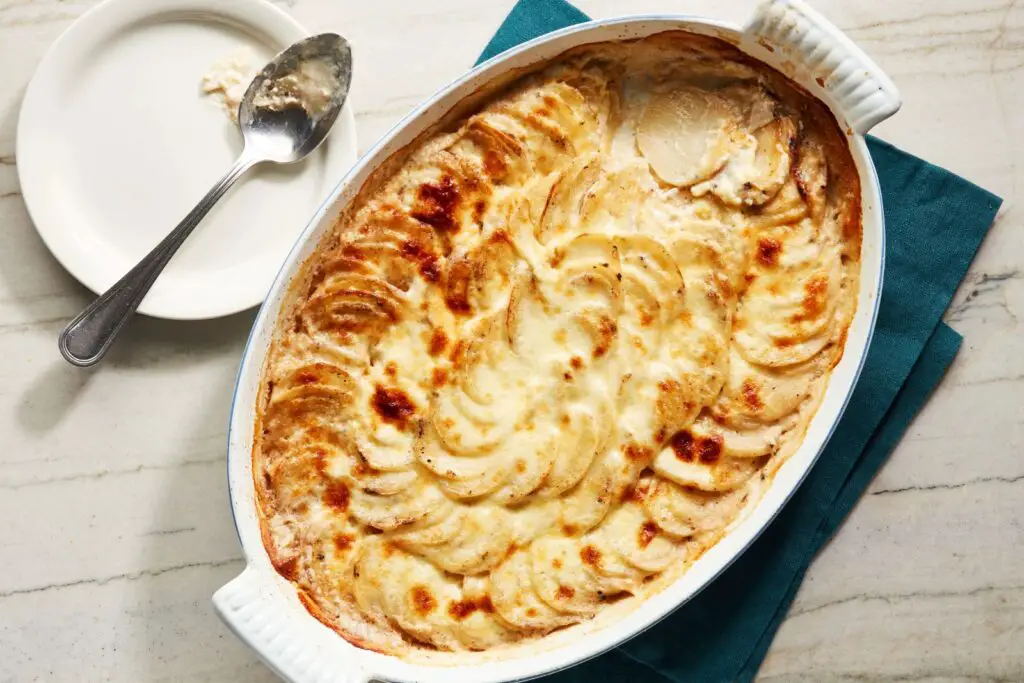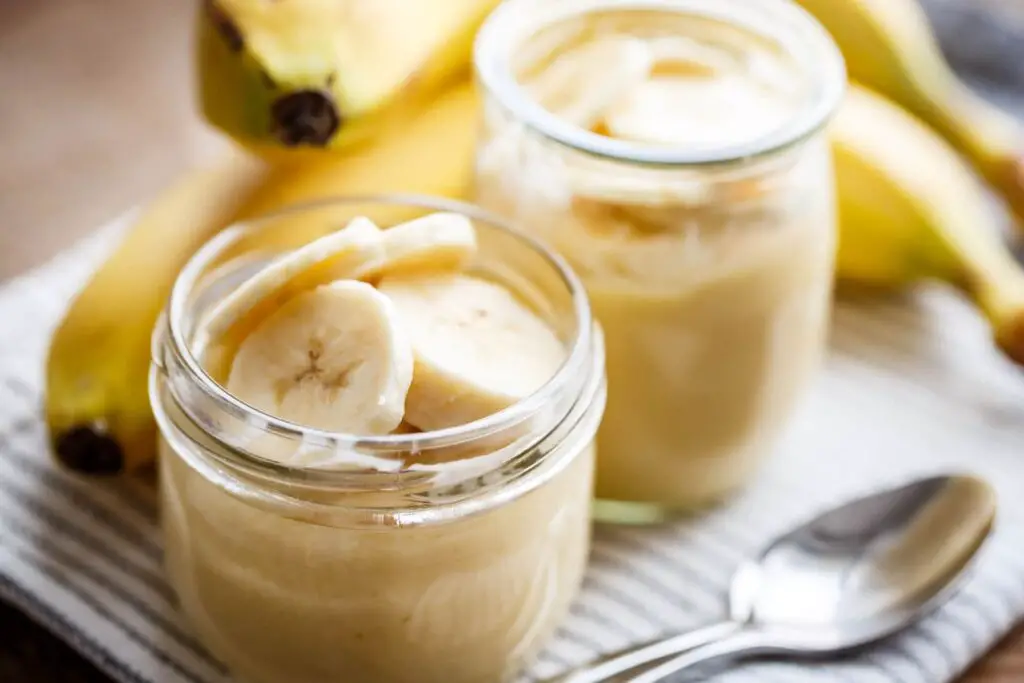
Bread dough refers to the mixture of ingredients used to make bread before it is baked. It is typically made by combining flour, water, yeast, salt, and sometimes other ingredients such as sugar, oil, or butter. Freezing bread dough can be a convenient way to always have fresh bread on hand. Whether you have made a large batch of dough or want to save some for later use, freezing it properly will help preserve its quality.
Here are the simple steps in freezing bread dough:
Step 1: Prepare the Bread Dough
Before freezing bread dough, it is important to go through the initial rising process. This step is crucial for activating the yeast and allowing the dough to develop its flavor and texture. Here’s why this step is essential before freezing:
- Yeast Activation: Yeast is a key ingredient in bread dough as it causes the dough to rise and gives it a light and airy texture. During the rising process, yeast consumes the sugars in the dough and produces carbon dioxide gas, which gets trapped in the gluten structure, causing the dough to expand. This process is known as fermentation. By allowing the dough to rise initially, you activate the yeast and ensure that it is actively working before freezing.
- Flavor Development: During the rising process, the yeast also produces various compounds that contribute to the flavor of the bread. These compounds, along with the fermentation process, develop complex and desirable flavors in the dough. By letting the dough rise before freezing, you give it the opportunity to develop these flavors fully.
- Texture Formation: The rising process also plays a crucial role in gluten development. Gluten, a protein network formed by the combination of flour and water, gives bread its structure and elasticity. During rising, gluten strands stretch and align, creating a network that traps the carbon dioxide gas produced by yeast. This network contributes to the final texture of the bread. Allowing the dough to rise before freezing ensures that the gluten has developed properly, resulting in a desirable texture in the baked bread.
By following your preferred bread recipe and allowing the dough to rise until it has doubled in size, you ensure that the yeast is active, flavors have developed, and the gluten structure is properly formed. These factors contribute to a better quality bread even after freezing and thawing. Once the dough has gone through this initial rising process, it is ready to be prepared for freezing using the remaining steps outlined in the freezing process.
Can I freeze bread dough immediately after kneading?
Freezing bread dough immediately after kneading is not recommended. The dough needs time to rise and ferment before it can be frozen. The yeast in the dough requires this rising process to develop flavor and structure, which would be inhibited if frozen right after kneading.
Step 2: Portion the Dough
Dividing the bread dough into individual portions or loaves is an important step before freezing. This allows for greater convenience and flexibility when it comes to defrosting and baking the bread later. Here’s why portioning the dough is beneficial:
- Controlled Serving Sizes: By portioning the bread dough, you can create individual serving sizes that align with your needs. Consider the amount of bread you typically consume in one sitting or the size of the loaves you prefer. This way, you can freeze the exact portion you need, avoiding unnecessary waste or the need to defrost and bake an entire loaf when you only require a portion.
- Efficient Defrosting: When you portion the dough before freezing, it becomes easier and quicker to defrost only the amount of bread you need. Smaller portions of dough will defrost more rapidly and evenly compared to a larger frozen loaf. This allows for more efficient use of your time and energy, as you can defrost and bake smaller quantities as desired without having to defrost the entire batch.
- Customization and Variety: Portioning the dough allows for customization and the ability to experiment with different flavors and shapes. You can divide the dough into smaller portions and add various ingredients like herbs, cheese, or nuts to create different bread varieties. Additionally, you can shape the dough into rolls, buns, or other desired forms for added variety and versatility.
- Portability and Convenience: Individual portions of frozen bread dough are highly portable and convenient. You can store them in separate containers or wrap them individually, making it easy to grab a portion and bake fresh bread whenever needed. This is especially useful for those busy days or when unexpected guests arrive, as you can quickly defrost and bake a single portion without any hassle.
Can I freeze shaped bread dough or only portioned dough?
Both shaped and portioned bread dough can be frozen. If you have shaped the dough into rolls, loaves, or other desired shapes, freeze them on a baking sheet until firm before transferring them to freezer-safe containers. This method allows you to bake the bread directly from its shaped form after thawing and final rising.
Step 3: Wrap the Dough
Properly wrapping the bread dough is crucial to prevent freezer burn and maintain its freshness during storage. The wrapping process involves tightly encasing each portion of dough with plastic wrap, ensuring there are no exposed areas. Here’s why this step is important:
- Protection from Freezer Burn: Freezer burn occurs when moisture within the food evaporates and forms ice crystals on the surface. These ice crystals can cause the texture of the bread dough to become dry, tough, and unpleasant. By tightly wrapping the dough with plastic wrap, you create a barrier that helps prevent moisture loss and the formation of ice crystals, thereby protecting the dough from freezer burn.
- Maintaining Freshness: Bread dough contains ingredients such as water and yeast, which are susceptible to drying out and losing their freshness when exposed to the cold temperatures of the freezer. By tightly wrapping the dough, you create a sealed environment that minimizes exposure to air and moisture, helping to maintain its freshness and quality.
- Preserving Texture: Proper wrapping also helps preserve the texture of the bread dough. If the dough is not tightly wrapped, it may absorb moisture from the freezer or release excess moisture, resulting in a soggy or unevenly textured bread once baked. By ensuring there are no exposed areas during the wrapping process, you can help maintain the desired texture of the bread dough.
To wrap the bread dough, tightly encase each portion in plastic wrap, ensuring that the entire surface is covered and sealed. Start by placing the dough in the center of a sheet of plastic wrap, then fold the edges over the dough, pressing and sealing the wrap to create a tight seal. Take care to eliminate any air pockets as you wrap. This will help ensure that the dough is well-protected and maintains its quality during freezing.
Step 4: Double Wrap with Aluminum Foil
After tightly wrapping the bread dough with plastic wrap, the next step is to provide an additional layer of protection by double wrapping it with aluminum foil. This extra layer of foil acts as a barrier against freezer burn and helps preserve the quality of the dough during storage. Here’s why this step is beneficial:
- Enhanced Protection: Aluminum foil is a sturdy and durable material that offers excellent insulation properties. By double wrapping the bread dough with aluminum foil, you create an additional layer of protection that helps shield the dough from temperature fluctuations and potential air exposure. This extra barrier minimizes the risk of freezer burn and helps maintain the dough’s moisture content, flavor, and texture.
- Preventing Freezer Odors: Aluminum foil also helps to prevent the absorption of freezer odors by the bread dough. The foil acts as a barrier against external odors in the freezer environment, ensuring that the dough retains its intended flavor and aroma. This is particularly important if there are strong-smelling foods stored in the freezer alongside the bread dough.
- Added Stability: The double wrapping technique with aluminum foil provides added stability to the wrapped dough. It helps maintain the shape and integrity of the dough during freezing, preventing it from being easily crushed or deformed by other items in the freezer. The foil also helps keep the plastic wrap in place, further securing the dough.
To double wrap the bread dough with aluminum foil, place the plastic-wrapped dough in the center of a sheet of aluminum foil. Fold the edges of the foil over the dough, ensuring that it is completely covered and sealed. Press the foil tightly to create a secure and snug wrap around the dough, minimizing any potential air exposure.
Can I freeze bread dough without using plastic wrap and aluminum foil?
While plastic wrap and aluminum foil are commonly used for wrapping bread dough before freezing, there are alternative methods you can explore. One option is to use airtight freezer bags, ensuring to remove as much air as possible. Another option is to wrap the dough tightly with parchment paper and place it in a freezer-safe container. Both methods help protect the dough from freezer burn and maintain its quality during freezing.
Step 5: Label and Date
Labeling and dating each wrapped portion of bread dough is an essential step in the freezing process. It allows you to keep track of the dough in your freezer and ensures that you can easily identify and retrieve the specific portion you want to bake. Here’s why this step is important:
- Easy Identification: By labeling each wrapped portion of bread dough, you create a clear and organized system in your freezer. You can indicate the type of dough, such as whole wheat, sourdough, or any specific flavors or additions. This makes it easier to identify and choose the desired dough when you are ready to bake.
- Preventing Confusion: Labeling also helps prevent confusion or mix-ups with other items in the freezer. It ensures that you can distinguish the bread dough from other frozen items and eliminates the need to unwrap and inspect each portion to identify what it contains. Clear labeling saves time and avoids any potential mistakes.
- Tracking Storage Time: Adding the date of freezing to the label is crucial for tracking the storage time of the bread dough. It allows you to monitor how long each portion has been in the freezer. This information is valuable to ensure that you use the dough within the recommended storage period, usually up to three months, for optimal quality and taste.
To label and date each wrapped portion, use a marker or adhesive labels. Write the necessary information clearly on the plastic wrap or foil. Include details such as the type of dough, any specific flavors or additions, and the date it was frozen. Place the label in a visible area, making it easy to identify when browsing through your frozen items.
Step 6: Freeze the Dough
Once you have properly wrapped and labeled the bread dough portions, it’s time to freeze them. Freezing the dough will preserve its freshness and allow you to store it for an extended period. Here’s how to freeze the bread dough effectively:
- Flat Storage: Place the wrapped bread dough portions in the freezer in a flat position. This helps maintain the shape of the dough and prevents it from getting squished or deformed. Storing the dough flat also allows for more efficient use of freezer space.
- Baking Sheet or Tray: It is recommended to initially place the wrapped dough portions on a baking sheet or tray before transferring them to the freezer. This prevents them from sticking to any surfaces and helps maintain their individual shapes. The baking sheet or tray also provides stability during the freezing process.
- Freezing Process: Once the dough portions are on the baking sheet or tray, transfer them to the freezer. Ensure they are placed in a single layer and not touching each other. This allows for better airflow around each portion, facilitating faster and more even freezing. It is important to freeze the dough as soon as possible after wrapping to maintain its quality.
- Arranging in the Freezer: Once the dough portions are fully frozen, you can arrange them as desired in your freezer to save space. You may choose to transfer them to a freezer-safe bag or container, stack them neatly, or use any other suitable method that works for your freezer setup. Just make sure the portions are still well-protected and properly labeled.
Step 7: Thaw and Bake
After freezing the bread dough, when you’re ready to indulge in freshly baked bread, it’s time to thaw and bake the dough. Here’s how to proceed:
- Retrieve from the Freezer: Remove the desired portion of bread dough from the freezer. Ensure you have properly labeled the dough, making it easy to identify the type and date of freezing.
- Thawing in the Refrigerator: Transfer the frozen dough to the refrigerator and allow it to thaw overnight or until it is completely defrosted. Thawing the dough in the refrigerator helps maintain its texture and quality while preventing rapid moisture loss. The gradual thawing process ensures that the dough remains in its best condition.
- Bringing to Room Temperature: Once the dough is fully thawed, remove it from the refrigerator and let it come to room temperature. This usually takes about 1 to 2 hours, depending on the size of the dough portion. Allowing the dough to reach room temperature is crucial, as it helps activate the yeast and allows the dough to undergo its final rising properly.
- Final Rising: Once the dough is at room temperature, place it in a lightly greased bowl, cover it with a clean kitchen towel, and let it undergo its final rising. Follow the original bread recipe instructions for the duration of the final rising. This step helps the dough regain its volume and develop the desired texture and flavor.
- Baking: After the final rising, it’s time to bake the bread. Preheat your oven to the recommended temperature stated in the original bread recipe. Transfer the dough to a baking sheet or a prepared loaf pan, depending on the desired shape. Follow the baking instructions from the recipe, adjusting the baking time if necessary based on the size of the bread and your oven’s performance.
Remember to monitor the baking process closely and make adjustments if needed, as different ovens may have slight variations in temperature and baking times. Enjoy the delightful aroma and taste of your homemade bread, made conveniently from the frozen dough.
Is it necessary to let the bread dough rise again after thawing?
After thawing bread dough, it is necessary to let it undergo a second rise before baking. Thawing alone does not complete the fermentation process, and the dough needs time to activate the yeast and develop its characteristic texture and flavor. Allowing the dough to rise after thawing ensures optimal results in the final baked bread.
Other related questions
How long can bread dough last in the freezer?
Bread dough can typically last in the freezer for up to three months without significant loss in quality. However, it’s important to note that the exact duration may vary depending on factors such as the specific recipe, ingredients, and storage conditions. Properly wrapping and labeling the dough, as well as following recommended freezing and thawing procedures, can help ensure the best results when using frozen bread dough.
Can I refreeze bread dough?
It is generally not recommended to refreeze bread dough after it has been thawed. Once the dough has thawed and undergone the rising process, its structure and texture may be compromised. Refreezing can lead to a loss of quality, affecting the final baked product. It is best to bake the dough after thawing or consider freezing the baked bread instead.
How do I know if the bread dough has gone bad after being frozen?
To determine if bread dough has gone bad after being frozen, look for signs of spoilage such as an off odor, unusual texture, or discoloration. Mold growth is also an indication of spoilage. If the dough exhibits any of these signs, it is best to discard it to avoid the risk of consuming spoiled dough.
Can I freeze different types of bread dough?
Absolutely! You can freeze various types of bread dough, including white bread, whole wheat, sourdough, or specialty doughs. The process remains the same regardless of the type of bread dough. Just ensure to wrap and label each type properly for easy identification and use.
Can I freeze bread dough with added ingredients like seeds or dried fruits?
Yes, you can freeze bread dough that contains added ingredients like seeds or dried fruits. However, it’s important to consider the texture and moisture content of the added ingredients. Some ingredients, such as large chunks of dried fruits, may affect the dough’s texture after freezing and thawing. It is recommended to evenly distribute the added ingredients throughout the dough and ensure they are well-covered to prevent freezer burn.








